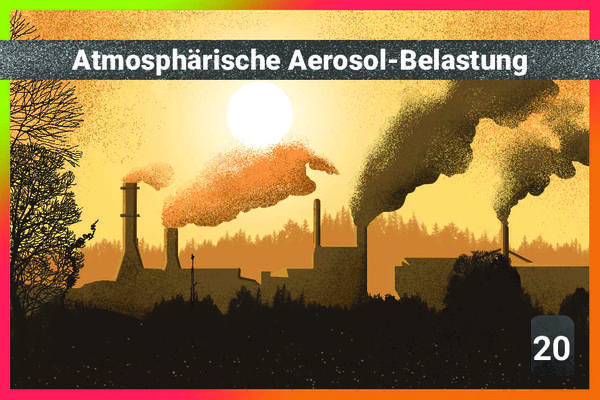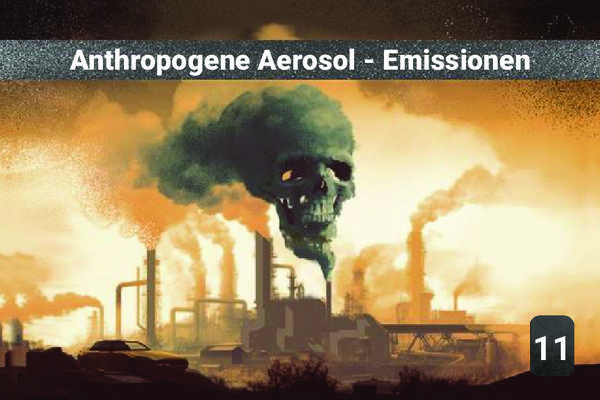20 - Atmospheric aerosols loading

✏️ Diese Erklärung ist in deiner Sprache noch nicht verfügbar, Hier klicken um deine Übersetzung vorzuschlagen oder schreibe eine E-Mail an fdn.memo@marc-antoinea.fr.
"Aerosols refer to fine particles suspended in the air. The vast majority of them are of natural origin (volcanic eruptions, sandstorms, etc.) but they can also result from human activities (primary aerosols) or physico-chemical transformations in the atmosphere (secondary aerosols).
Due to their size, aerosols can penetrate the respiratory system and have negative effects on human health.
To understand this planetary boundary, we measure the overall concentration of particles in the atmosphere, on a regional basis. Atmospheric aerosol load is measured by the level of light transmission in the atmosphere. We use the AOD coefficient, aerosol optical depth, whose value is between 0 and 1.
1Ursache
Even though they have a shorter lifespan than GHGs, the continuous emission of aerosols increases the aerosol load in the atmosphere.
2Auswirkungen
For water vapor to condense, it needs a “core”. Aerosols can constitute this core, promoting the condensation of water vapor and the formation of raindrops.
“Fine particles (PM10, PM2.5, mainly from automobiles and wood heating) are found in large quantities in urban areas, so much so that most of the world's population is exposed to them. Fine particles enter our lungs. Air pollution is responsible for 50 to 60,000 premature deaths in France, and 4.5 to 8.8 million worldwide. 91% of the world's population lives in places where WHO air quality guidelines are not met (2016 study)."



